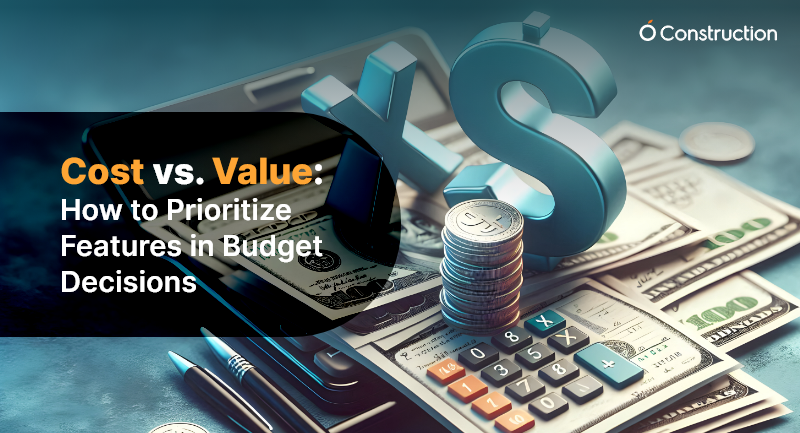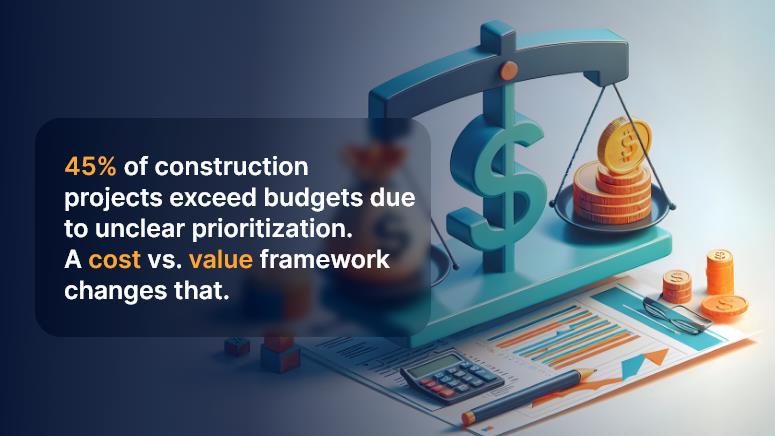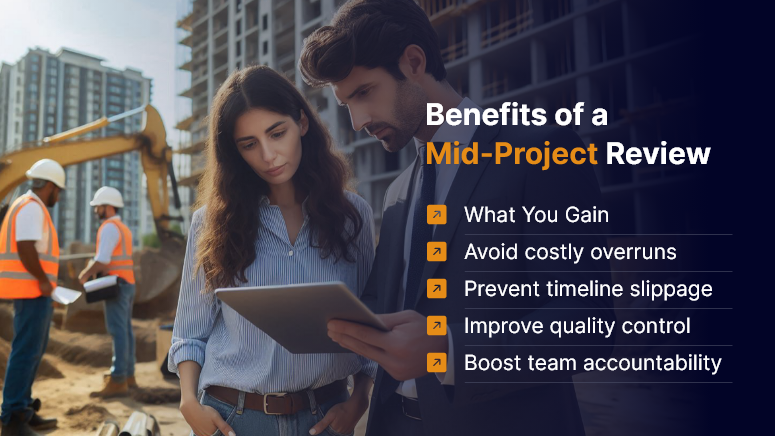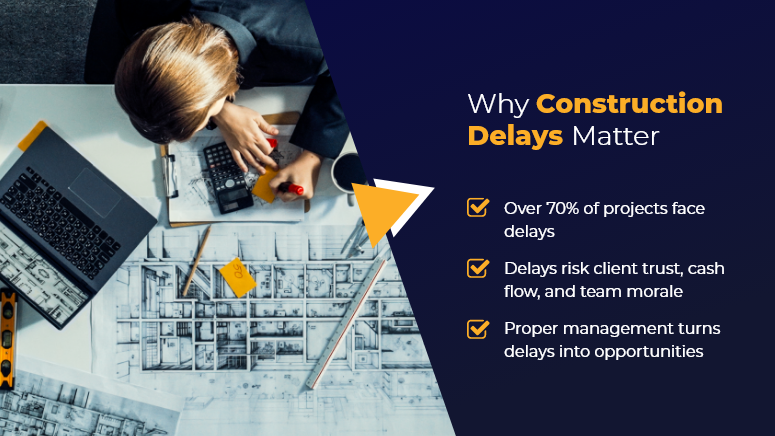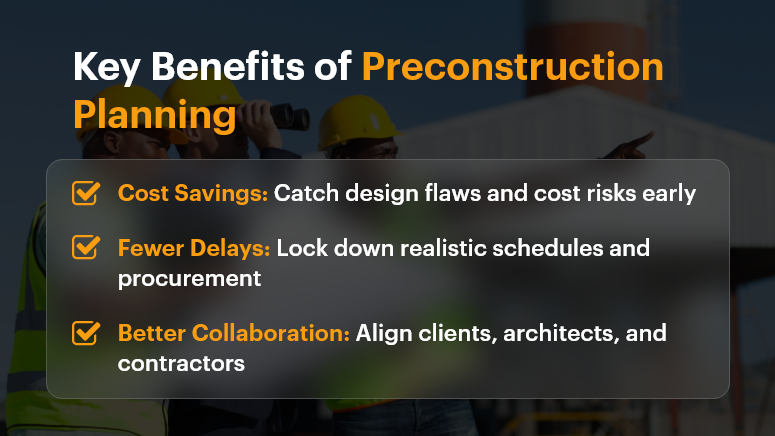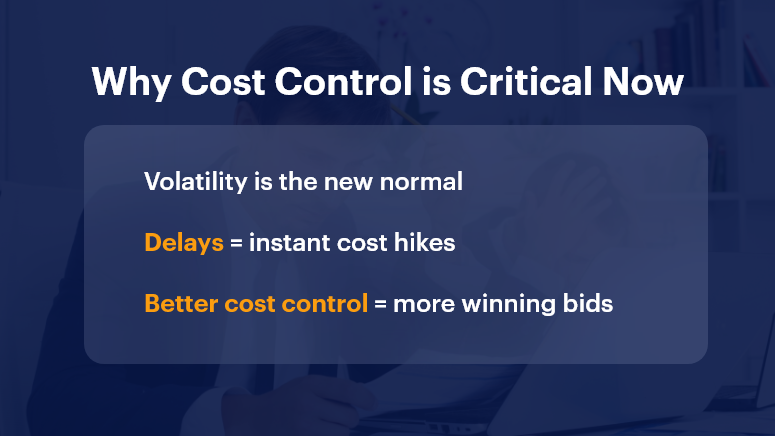Cost overruns are the Achilles’ heel of the construction industry. Studies reveal that 9 out of 10 large projects exceed their budgets, sometimes by as much as 50% or more. The reasons vary — from untracked invoices to material wastage, scope creep, or delayed approvals. But the root cause is often the same: poor visibility and lack of control over finances.
This is where digital project management tools come in. By providing real-time cost tracking, automated workflows, and predictive insights, they enable construction companies to identify leaks early and prevent them from escalating into substantial financial losses.
In this blog, we’ll delve into why financial leakages in projects are a pressing issue, how they impact profitability, and the practical ways digital tools like OConstruction help address these gaps. Whether you’re a project manager, contractor, or finance controller, this guide will show you how to safeguard your bottom line.
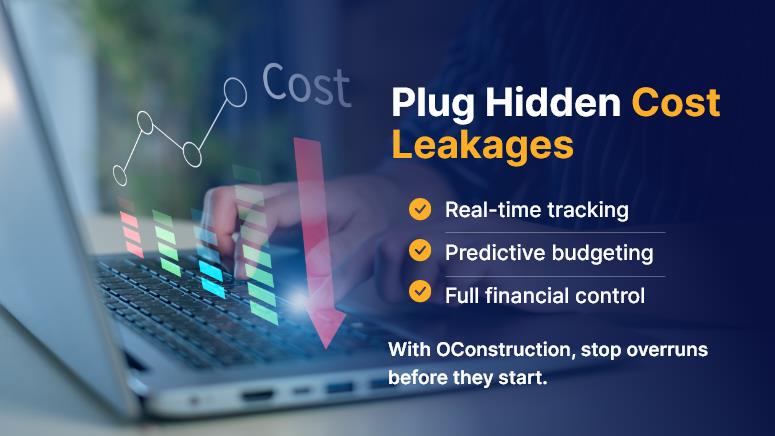
Business Relevance & Why It Matters
Financial leakages in projects may seem like small issues at first glance. A misplaced invoice, a delayed approval, or a minor over-purchase of materials might not raise alarms immediately.
But when multiplied across a large construction project with multiple vendors, subcontractors, and timelines, these “small” issues can quickly escalate into significant financial drains.
Why This Matters for Businesses
Construction projects already operate on tight margins. Any unmonitored leak not only eats into profits but also damages client trust. Imagine promising to deliver a commercial complex within a ₹50 crore budget, only to explain midway that costs have ballooned by 20%. That’s not just a financial setback; it’s a reputational hit.
Who Benefits Most from Prevention
- Contractors: Gain visibility into expenses and reduce disputes with clients.
- Project Managers: Ensure smooth execution without firefighting cost overruns.
- Finance Controllers: Strengthen compliance and reporting accuracy.
- Owners/Investors: Protect ROI and gain confidence in project delivery.
Real-World Problems Across Industries
- Infrastructure Projects: A highway contractor delays vendor payments due to manual reconciliation. Result? Late fees and strained supplier relationships.
- Commercial Construction: A retail mall project overspends on materials due to duplicate procurement requests not caught in time.
- Residential Projects: A housing developer faces hidden labor costs because subcontractor hours are tracked on paper instead of a central system.
The pain vs. solution contrast couldn’t be clearer: traditional methods expose businesses to leakages, while digital systems build a safety net.
Best Practices, Frameworks, and Actionable Strategies
Digital construction tools don’t just replace spreadsheets; they transform how costs are planned, tracked, and controlled. Below are the proven practices and frameworks that leading construction companies use to prevent financial leakages in projects.
1. Automate Cost Tracking for Accuracy
Manual expense tracking is prone to errors and delays. Even the most diligent project manager cannot match the precision of an automated system.
- With digital tools: every transaction is captured instantly and linked to the right project, task, or vendor.
- Outcome: Managers know exactly where the money is going, ensuring no expense goes untracked.
Example: Instead of waiting for monthly reconciliations, a project manager can see daily material costs logged automatically into the system.
2. Leverage Real-Time Dashboards for Transparency
Dashboards are more than pretty visuals. They provide instant clarity on budgets, expenses, and forecasts.
- Identify areas where costs are rising faster than expected.
- Monitor project performance against financial baselines.
- Take corrective action before overruns occur.
Imagine catching an over-budget material purchase on the same day it’s requested — that’s the power of real-time visibility.
3. Integrate Finance and Project Operations
Siloed teams are a major cause of financial leakages. Finance works on one set of numbers, while the project team works on another. Misalignment creates discrepancies that only surface too late.
- With integration: Finance, procurement, and site managers use the same system.
- Result: No duplicate costs, no missed payments, and smoother audits.
OConstruction ensures everyone speaks the same financial language.
4. Adopt Predictive Budgeting for Proactive Control
Traditional budgeting reacts after the damage is done. Predictive budgeting flips the script by using historical and live data to forecast potential overruns.
- Anticipate cost spikes in labor or materials.
- Adjust budgets before commitments are made.
- Prevent risks from escalating into losses.
For example, if steel prices are projected to rise, the system alerts managers to secure materials early, saving costs.
5. Do’s and Don’ts for Preventing Leakages
Do’s
- Standardize workflows to minimize manual errors.
- Set automated alerts for budget threshold breaches.
- Regularly review subcontractor invoices and link them to contracts.
- Track material usage to prevent wastage.
Don’ts
- Don’t rely only on manual reconciliation — errors multiply fast.
- Don’t delay expense reporting; late entries distort reality.
- Don’t overlook “minor” costs — they accumulate quickly.
- Don’t manage separate systems for finance and projects.
6. Quick Wins for Immediate Impact
- Digitize procurement to reduce fraud and ensure transparency.
- Automate payroll and subcontractor payments to avoid hidden costs.
- Schedule monthly audits using system-generated reports.
- Link costs to project milestones for better accountability.
These steps deliver fast ROI without complex implementations.
7. A Practical Framework for Financial Control
Here’s a simple but powerful framework to follow:
- Baseline the Budget Digitally – Define expected costs across labor, materials, and overhead.
- Connect Every Expense – Link every rupee spent to specific tasks, vendors, or milestones.
- Track Actual vs. Planned Costs – Use live dashboards for daily monitoring.
- Review Weekly – Conduct quick reviews with finance and site managers.
- Report Automatically – Share transparent reports with stakeholders to build trust.
Following this framework ensures continuous financial discipline across the project lifecycle.
Customer Story/Use Case Example
For example, Skyline Builders, a mid-sized construction company, struggled with frequent budget overruns due to manual invoice approvals and late expense tracking. By adopting OConstruction’s digital project cost management platform, they achieved measurable improvements:
- Reduced untracked expenses by 30% in the first year
- Saved nearly 15% in overall project costs
- Accelerated subcontractor payment cycles by 40%
- Delivered projects on schedule with improved client confidence
This transformation highlights how plugging financial leakages with digital tools delivers both financial and operational wins.
Key Takeaways & Closing Summary
Financial leakages in projects are silent killers of profitability. But with the right strategies, they are preventable.
In summary:
- Automated cost tracking ensures accuracy.
- Real-time dashboards provide transparency.
- Integration of finance and project teams eliminates silos.
- Predictive budgeting enables proactive control.
By combining these best practices with a platform like OConstruction, companies not only stop leakages but also gain the ability to deliver projects faster, cheaper, and with higher quality.
Final Thought:
The choice is simple: stick with outdated methods and risk uncontrolled losses, or adopt digital tools to future-proof financial management. The companies that embrace digital transformation today will be tomorrow’s leaders in construction efficiency.
FAQs
1. What are financial leakages in projects?
There are hidden costs like duplicate payments, material wastage, or billing errors that increase project expenses.
2. How can digital tools stop financial leakages?
They track costs in real time, automate approvals, and flag unusual spending before it escalates.
3. Why are leakages common in construction projects?
Because of multiple vendors, manual tracking, and a lack of centralized cost control.
4. Who benefits most from preventing financial leakages?
Project managers, finance teams, and owners—all gain clarity, savings, and smoother execution.
5. Is OConstruction suitable for small firms too?
Yes, it’s scalable for both small contractors and large enterprises, offering cost control and transparency.

